SolanumBush Tomato Solanum centrale Solanum chippendalei Solanum ellipticum Solanum quadriloculatum
Solanum ellipticum, known as the potato bush, although commonly called the Native Tomato (or the Bush Tomato) is widespread throughout Central Australia, providing an abundance of fruit when conditions are suitable.
A striking looking plant, that are at their best after rain, with purple mauve flowers and furry velvety leaves that are pale green or greyish. Unlike the Solanum centrale that has a more star-shaped flower, the Solanum ellipticum corolla is a more pentagonal shape, measuring 20–30 mm diameters across. The bright yellow stamen/anthers are about 4–5 mm long. There are 1 to 7 flowers on the inflorescence.
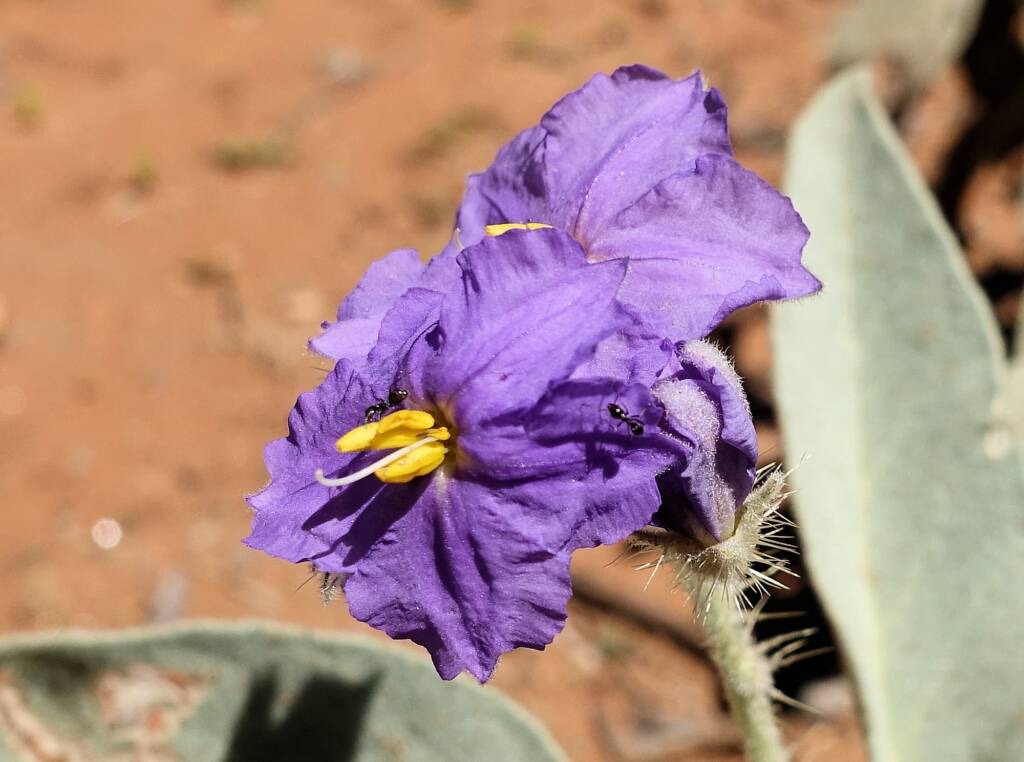
The leaves are ovate to elliptic, about 4–8 cm long and 2–3 cm wide, undulate and the petiole is 1–5 cm long.
The fruit are round that starts off green (may have purplish stripes) and then turns to yellow when ripe. The fruit of this species is edible but care should be taken as other Solanum species have poisonous or unpalatable fruit.
A sprawling perennial herb, the Solanum ellipticum is hairy (prickles up to 10 mm long) along the stems. A fast growing shrub, they can be found growing on yellow to red sand, sandy, granite, sandstone soil and next to creek beds. Seen on spinifex plains, scree slopes and rocky outcrops.
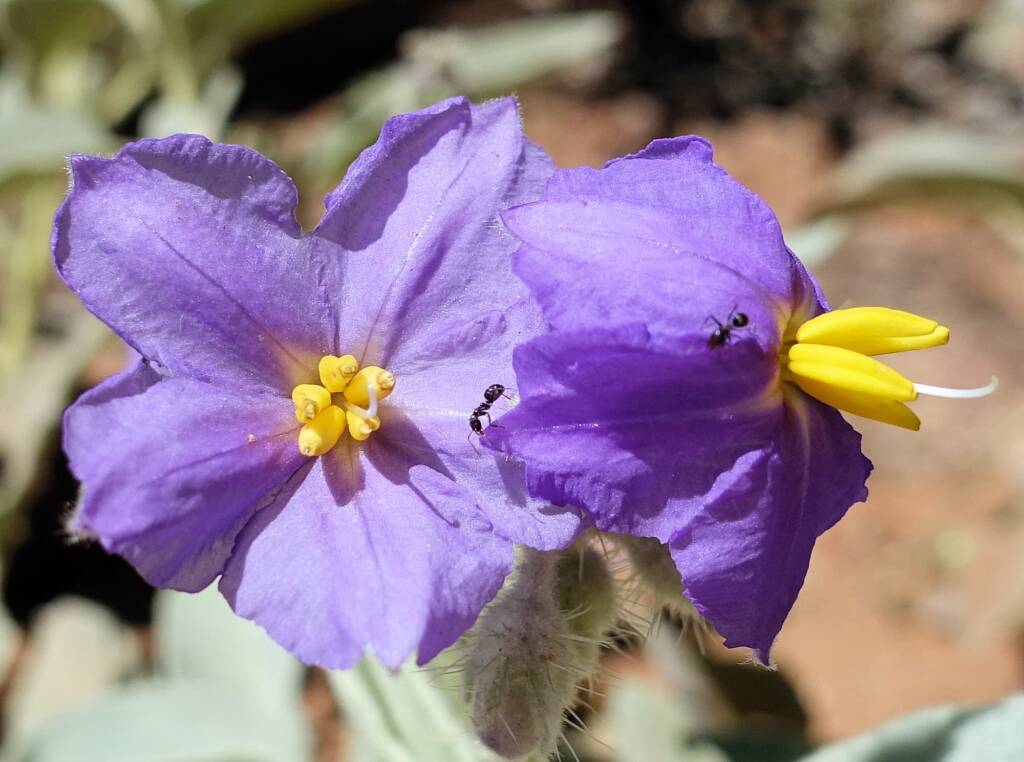
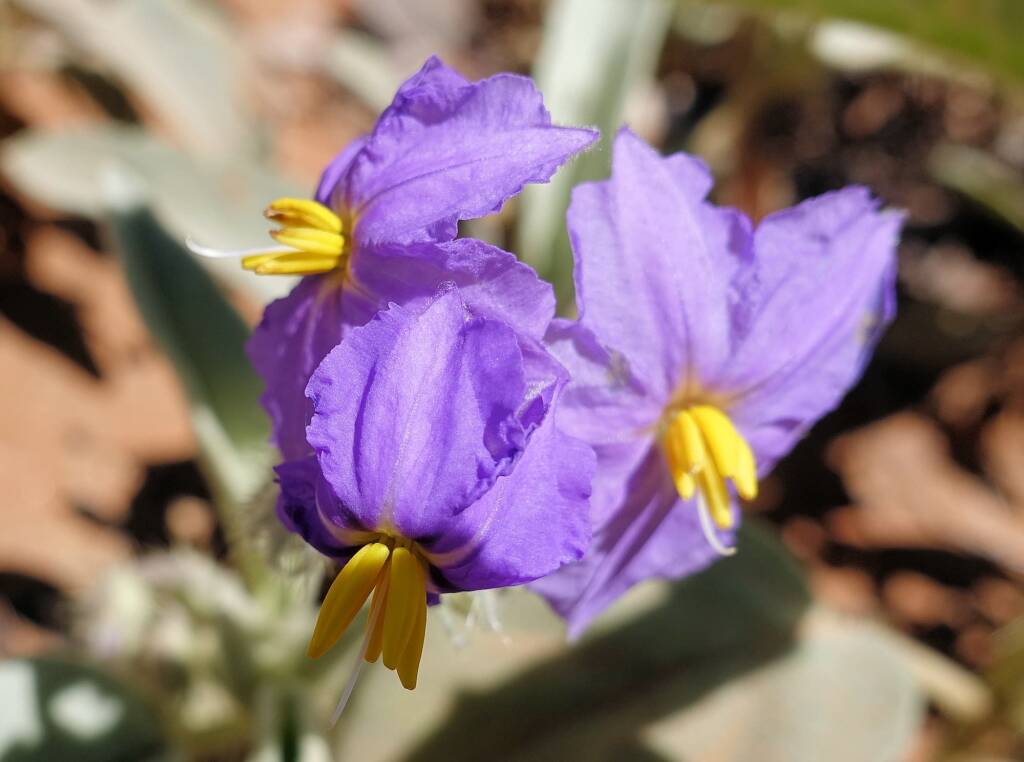

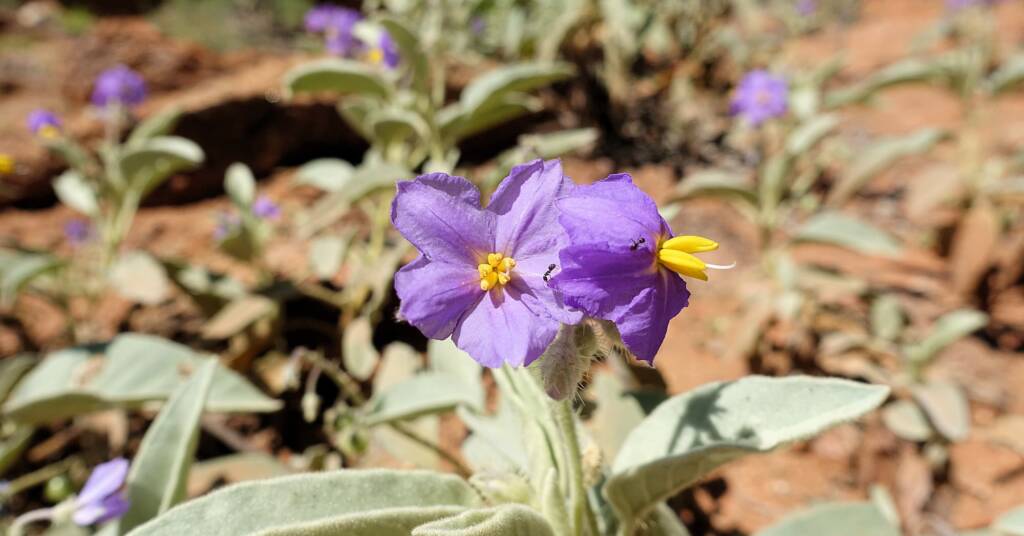
This is a variable species, with three main forms: the typical form (that is moderately prickly with relatively large leaves) and is widespread in arid areas; a prickly form occurs on ranges in Central Australia; and a small-leaf form occurs on the upper Eyre Peninsula (mainly west of the Flinders Ranges).
Common name
Potato Bush, Bush Tomato, Native Tomato.
| CAUTION If you are not an expert at identifying the plant, ‘DO NOT’ eat the fruit, as some Solanum species that look similar, are toxic. In the Solanum species, the unripe fruit contains the toxin solanine (the same as that found in green potatoes). Only a select few species of Solanum produce edible fruit when fully ripen. Others remain toxic. There are many other Solanum species that resemble Solanum centrale, and only some of them produce edible fruit eg Solanum chippendalei and Solanum ellipticum. Some closely related species produce fruit that are toxic. S. sturtianum is poisonous and can usually be recognised by the yellow or black dry brittle fruits. |
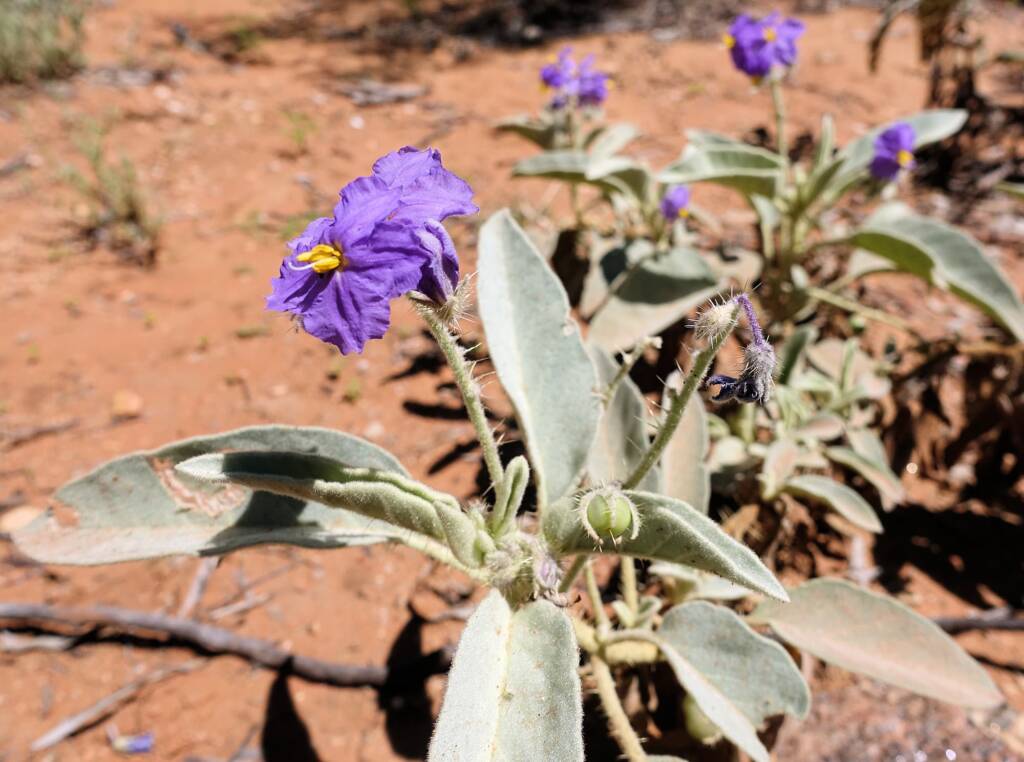
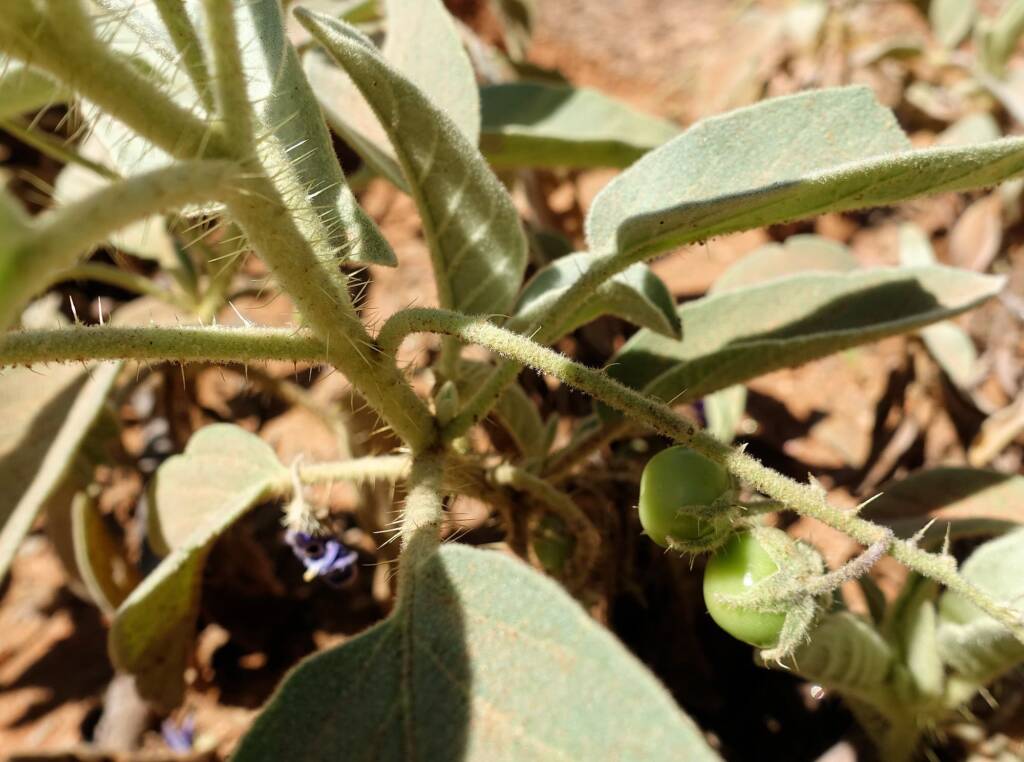
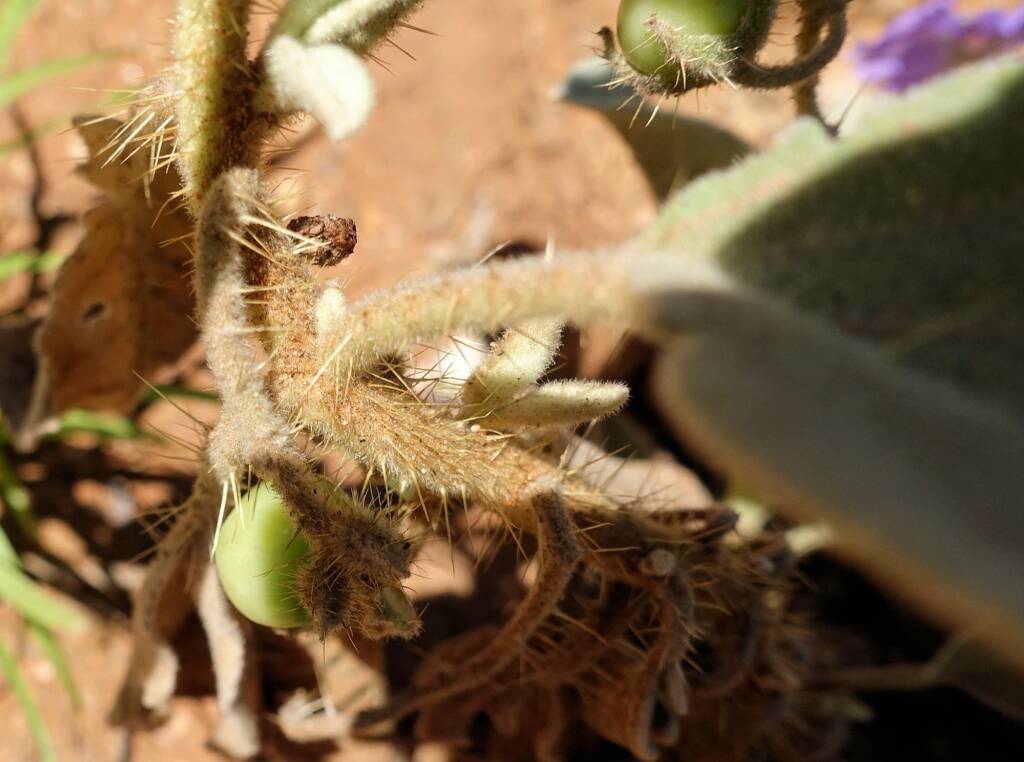
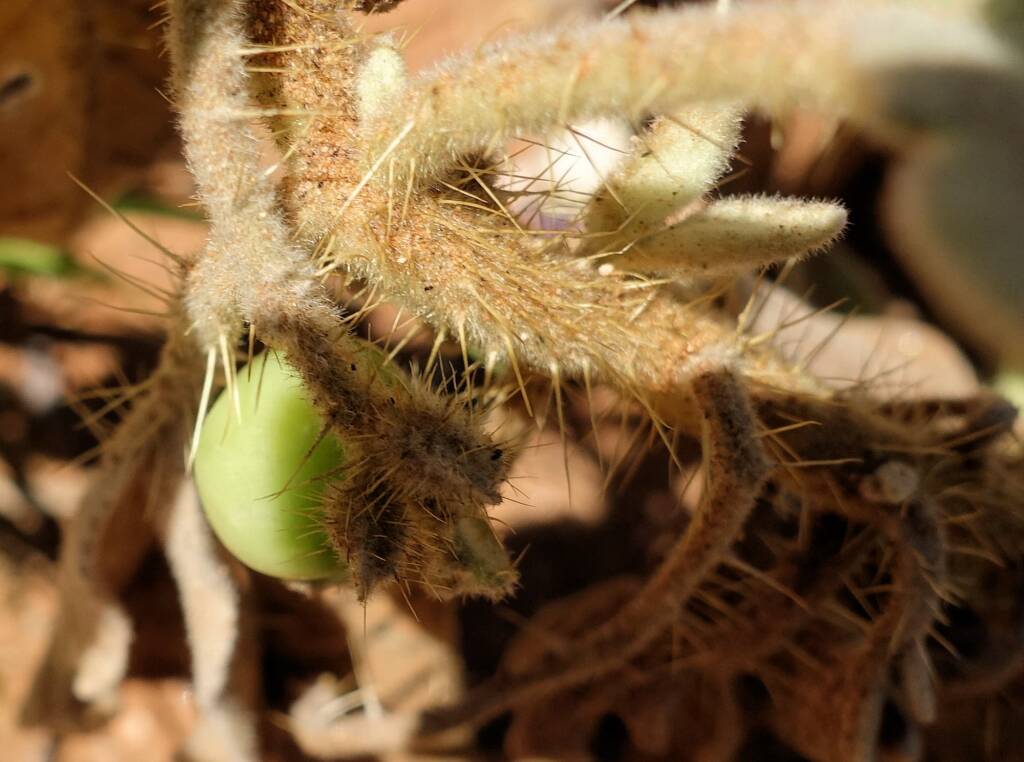
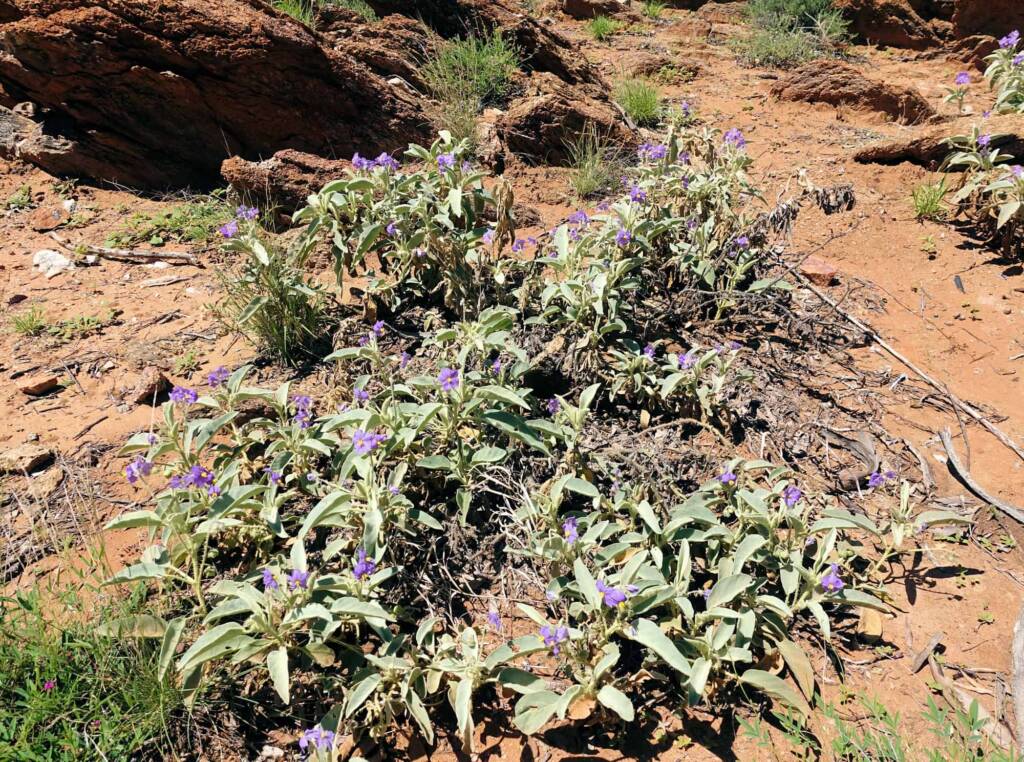
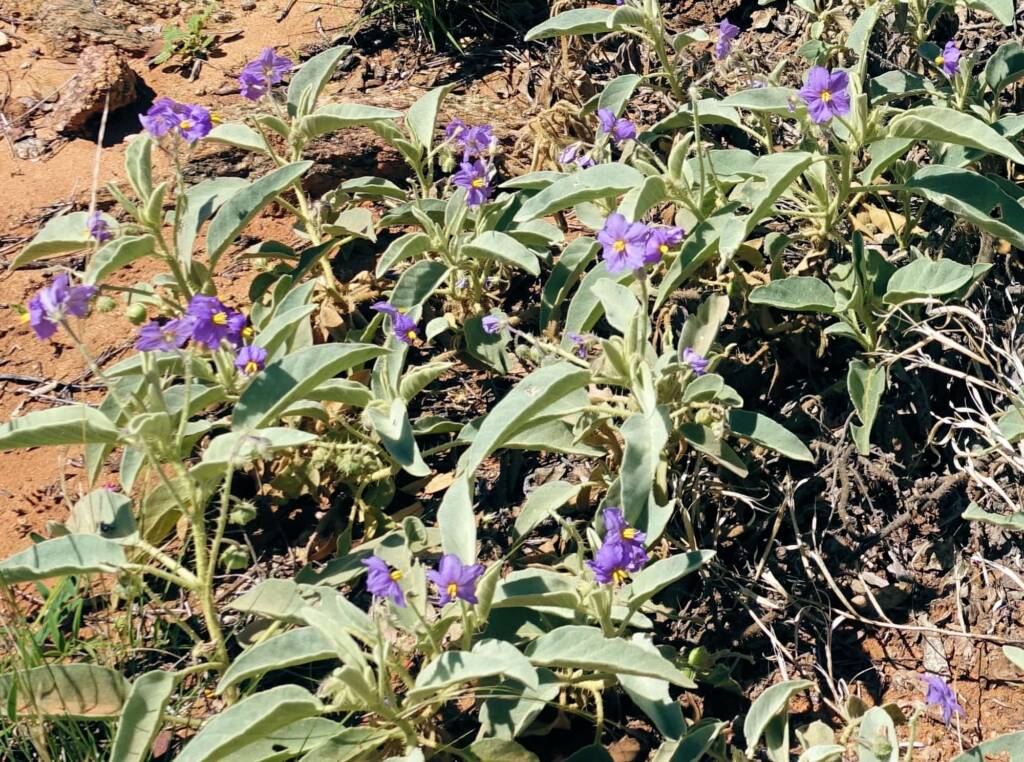
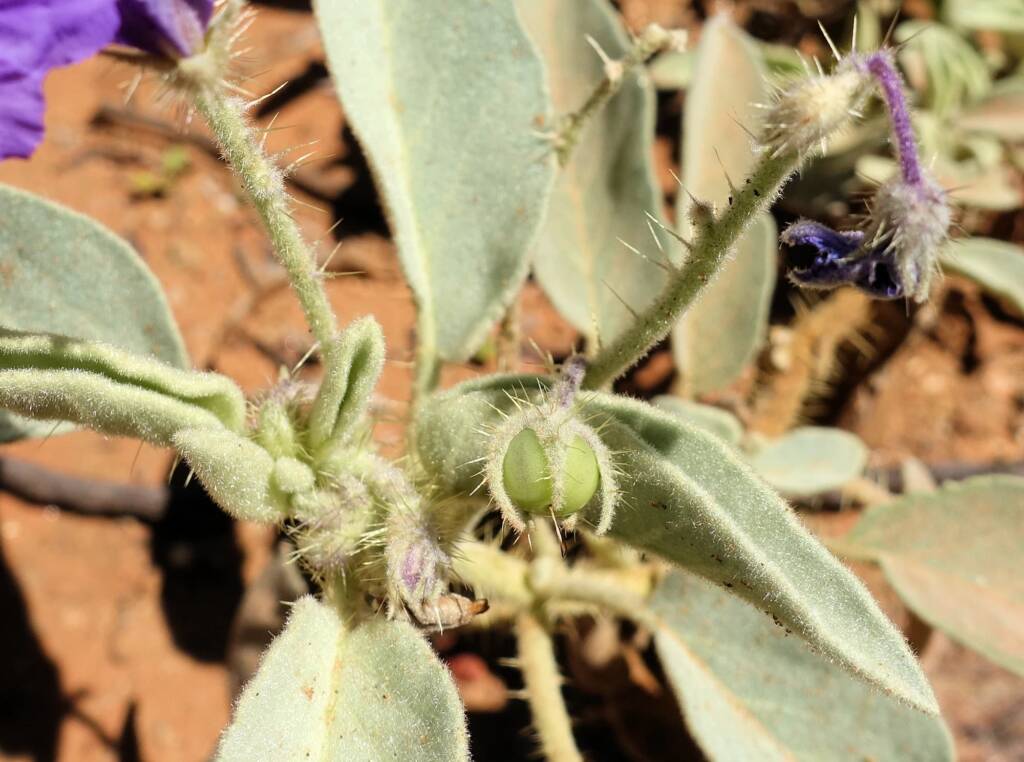
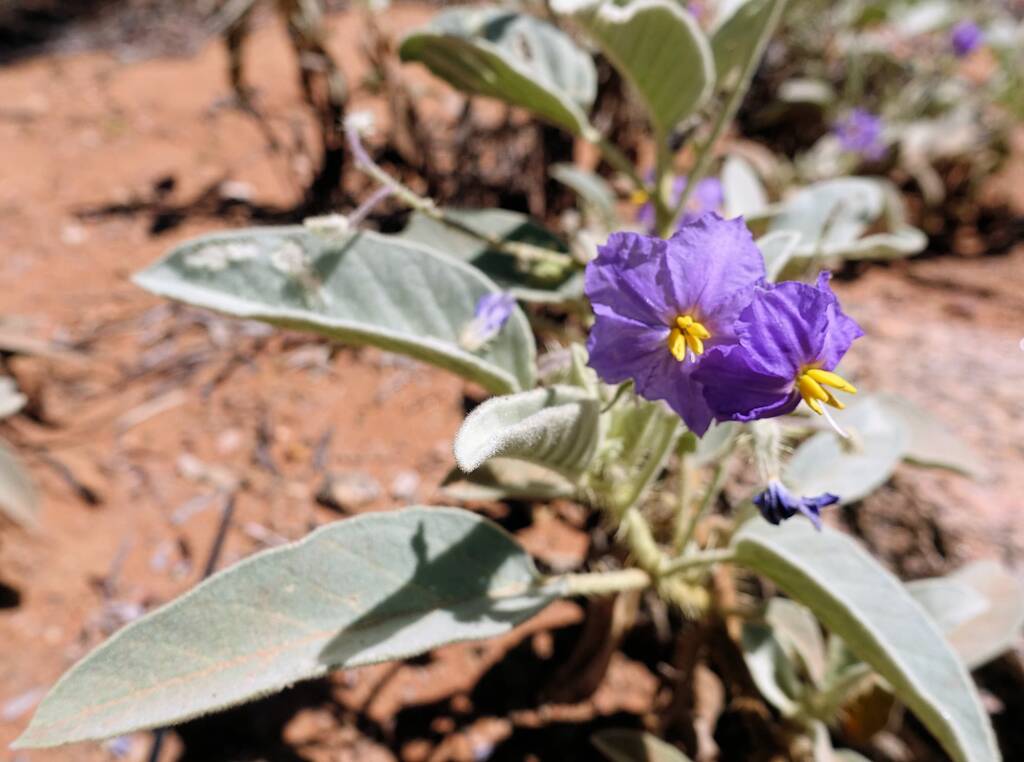
- Scientific classification
- Kingdom: Plantae
- Clade: Tracheophytes
- Clade: Angiosperms
- Clade: Eudicots
- Clade: Asterids
- Order: Solanales
- Family: Solanaceae
- Genus: Solanum
- Species: Solanum ellipticum
Footnote & References
- Solanum ellipticum, Australian Native Plants Society (Australia), http://anpsa.org.au/s-eli.html#
- Solanum ellipticum, eFlora SA, Government of South Australia, http://www.flora.sa.gov.au/efsa/lucid/Solanaceae/Solanum%20species/key/Australian%20Solanum%20species/Media/Html/Solanum_ellipticum.htm
SolanumBush Tomato Solanum centrale Solanum chippendalei Solanum ellipticum Solanum quadriloculatum
FloraFlora in Australia Flora Index Acacia Anigozanthos (Kangaroo Paws) Annual Yellowtop Apium prostratum subsp. prostratum var filiforme Apple Bush (Pterocaulon sphacelatum) Australian Bluebell Australian Gossypium Banksia Batswing Coral Tree Billy Buttons Birdsville Indigo Blue Pincushion Bush Banana Callistemon Callitris drummondii (Drummond’s Cypress Pine) Calothamnus quadrifidus Cape Honeysuckle Cassia fistula (Golden Shower) Cattle Bush Common Heath Crotalaria Darwinia wittwerorum (Wittwer’s Mountain Bell) Daviesia oppositifolia (Rattle-pea) Desert Oaks Drumsticks Eremophila Eucalyptus Ficus Flannel Cudweed (Actinobole uliginosum) Georges Indigo Goatshead Burr (Sclerolaena bicornis) Golden Everlasting Goodenia Gossypium Grass and Grasses Grass Trees Grevillea Grey Germander Hakea Kapok Bush (Aerva javanica) Lambertia sp Leptospermum MacDonnell Ranges Cycad Maireana scleroptera Mexican Poppy Minnie Daisy Mistletoe Family Nardoo Native Apricot Nicotiana megalosiphon subspecies sessilifolia Nuytsia floribunda Orange Spade Flower Orchidaceae Parakeelyas (Calandrinia) Pebble Bush (Stylobasium spathulatum) Perennial Yellow Top Pink Everlasting Pink Rock Wort Poached Egg Daisy Portulaca Proteaceae Ptilotus Quandong Resurrection Fern Rosy Dock Ruby Saltbush Santalum Solanum Spike Centaury Spinifex Storkbill (Erodum cygnorum) Striped Mint Bush Sturt’s Desert Pea Sturt’s Desert Rose Tall Saltbush Tangled Leschenaultia Tar Vine Tribulus eichlerianus Upside-down Plant Urodon dasyphylla Variable Daisy Waratah (Telopea) Wertabona Daisy White Cedar (Melia azedarach) White Indigo White Paper Daisy Wild Passionfruit Wild Stock Woolly-Headed Burr Daisy Woolly Bush Yellow-keeled Swainsona
